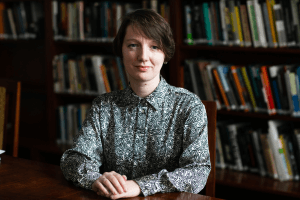Related sources:
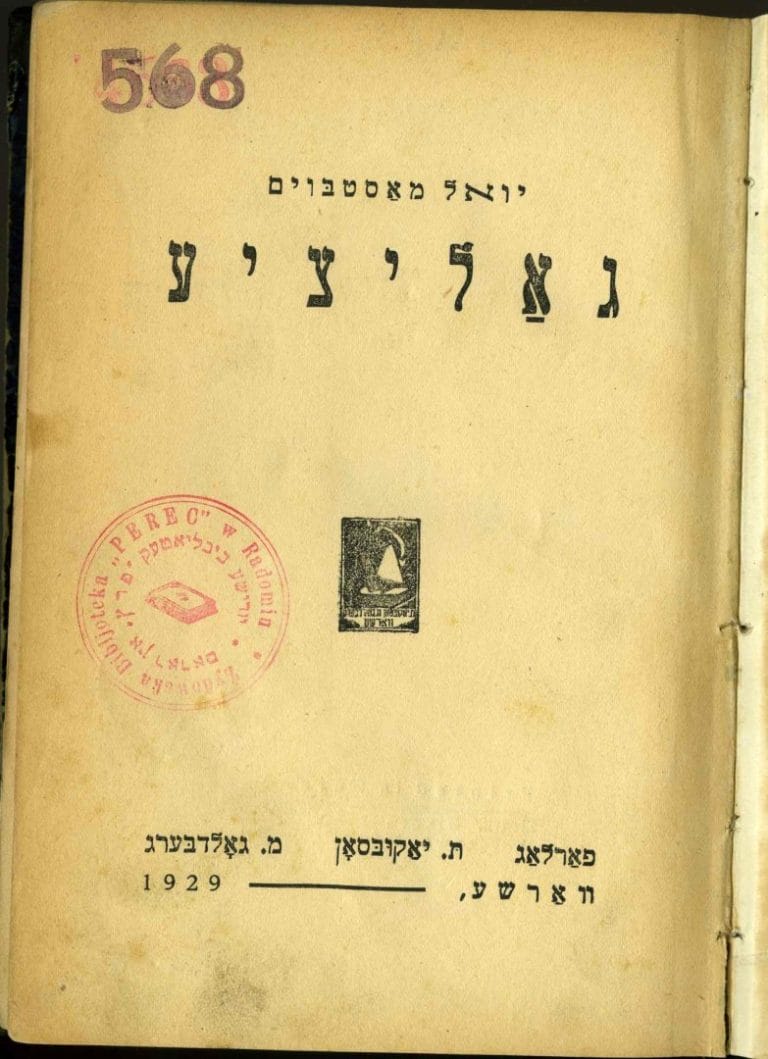
Boryslav mining workers in the late 19th and early 20th centuries
Comment is caming

Israel Joshua Singer about Yekaterynoslav in 1920s
The report by Israel Joshua Singer, a Polish writer who wrote in Yiddish, was part of his 1926 tour of the Soviet Union. The reporter's journey covered a wide region, from Moscow to the colonies near the Black Sea, and the subject of his essay touched on the lives of Jews in a new environment — large industrial cities such as Katerynoslav or Kharkiv or agricultural colonies. Israel Joshua Singer's travel notes allow us to observe the coexistence of various minorities of the Soviet Union in the new state. He looks at national politics and state initiatives such as Ukrainization from a distance and asks local Jews about their attitude and adaptation to...

Polish émigré song, 1918-1939
The socialist movement actively tried to attract emigrant workers. The theme of the hard labour of workers in factories or sweatshops appears in the works of socialists, who were often emigrants themselves. Some songs were anthems, and were created for that collective singing. An example of this is the Polish émigré song. There, emigrants leave their native land because of social injustice. Landlords, magnates, and priests are opposed to oppressed workers or soldiers who returned from the war and did not receive the expected guarantees. At the same time, the song emphasizes the temporary nature of emigration, because emigrants will return to their native land to make a revolution.

Mykhailo Zubrytskyi. Our Emigration, Dilo, 1902
Mykhailo Zubrytskyi is a Greek Catholic priest and a public figure who analyzes the phenomenon of migration to the United States from the Carpathian village of Lyutovytska, in the Ukrainian newspaper Dilo. The author describes the migration strategies of peasants, the stages of the migration process, adaptation to a new place, and difficulties with returning. Although the text focuses on Ukrainian migration, the author mentions Jews who were also leaving for the United States, as well as Jews who acted as intermediaries in migration. At the same time, for the author, as for a public figure, the influence of migration on Galicia was important, which he saw as multidimensional. Migration meant the outflow...
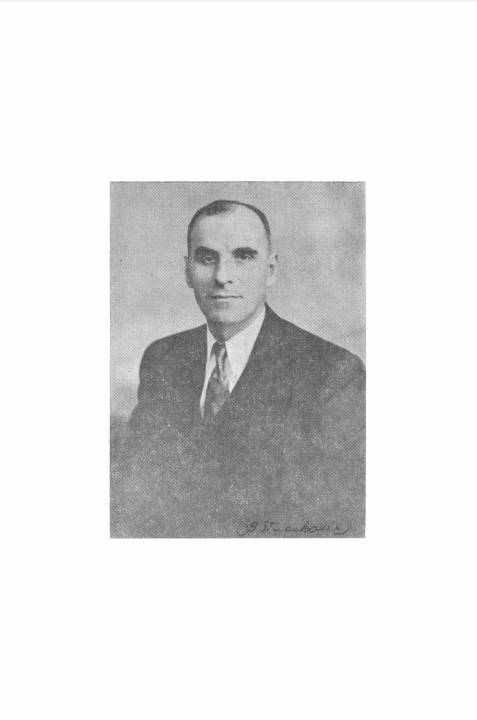
Excerpt from the memoirs of Ukrainian еmigrant in Canada Vasyl Plaskonis about his migration experience in 1925
An excerpt from the autobiography of Ukrainian migrant, Vasyl Plaskonis, describes his experience of leaving interwar Poland for Canada in 1925. The motivation for emigration was not only economic, but also political, as Vasyl Plaskonis felt persecuted in Poland as a former participant in the Polish-Ukrainian war. The author considered his decision to migrate as temporary. The text describes the process of making a decision about the departure, journey, and the first months of adaptation in Canada. An important issue is the mediation of agents who helped emigrants to purchase tickets and leave. In Canada, new Ukrainian migrants found work in mines, or as day laborers on farms. The text explains how the...
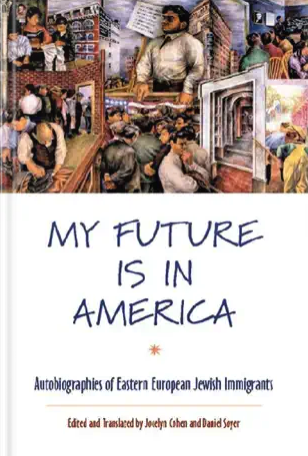
Excerpt from the Ben Reisman autobiography, a native of the Galician town Kalush, who emigrated to America in 1896
The autobiography was sent to a competition of migrant autobiographies organized by the YIVO Jewish Institute. Its author is Ben Reisman from the Galician town of Kalush, who recalls his childhood in Galicia, his arrival to America in 1896, and his involvement in the socialist movement. The selected passage shows the process of travel and the importance of a network of social contacts between migrants from the same region. Such connections made it possible and easier to make a decision on migration, job search, or an adaptation to a new place. One of the typical moments of involvement in a new place is interest in politics. Ben Reisman arrived in the United States...
Show more
Collapse all

“Jewish Grandmother”, photo by Lewis Hine
Lewis Hine (1874-1940) was an American photographer who tried to draw attention to social issues such as migration or child labor. He took two series of photos on Ellis Island, an island near New York City that was the first stop and gateway for new arrivals. Photos of Lewis Hine are trying to show the identity of migrants, who were often exoticized and othered in the American press. The Jewish woman in the photo is dressed in clothes that do not distinguish her from other migrants from Eastern Europe. However, although Jewish migration was often also motivated by economic motives, in the public discourse and historiography of the early twentieth century, it was...
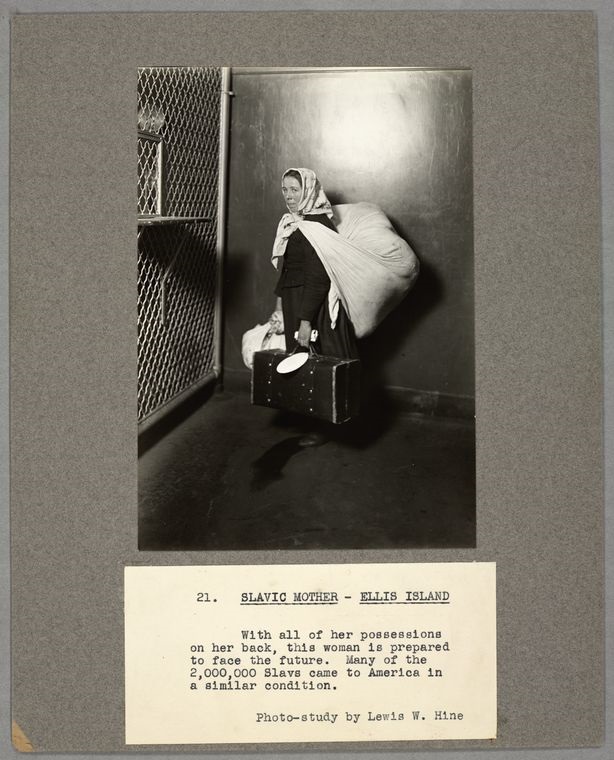
“Slavic Mother”, photo by Lewis Hine
Lewis Hine (1874-1940) was an American photographer who tried to draw attention to social issues such as migration or child labor. He took two series of photos on Ellis Island, an island near New York City that was the first stop and gateway for new arrivals. Photos of Lewis Hine are trying to show the identity of migrants, who were often exoticized and othered in the American press. The name of the photo "Slavic Mother" shows that Eastern Europe for Americans was still a space, which differences and nuances they hardly noticed. Hine perceives the woman in the photo as a person who left Europe forever, taking along all her posessions, and having...
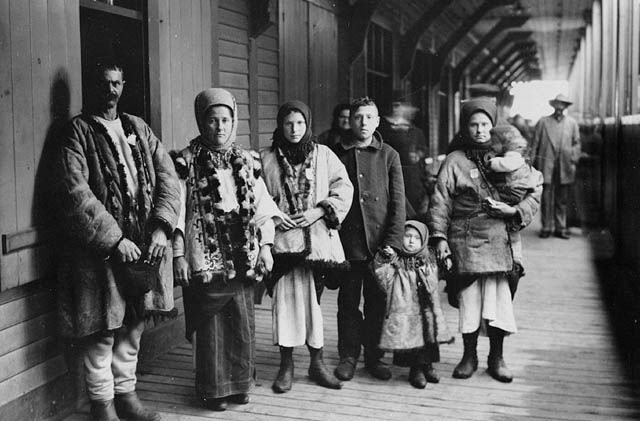
Galician Migrants, Quebec, about 1911
The photo shows a group of migrants from Galicia, probably Ukrainians in Canada. Despite the information that before emigration, peasants bought urban clothes, in this photo we see people in traditional attire, which is different from the Canadian environment. Attitude towards Eastern European migrants was arrogant. In particular, clothing would often become the basis for otherness. Thus, the process of successful integration involved “dressing up” in Western clothes. In the photo, we can see a large family, because often the first migrants who were young men and women, later transported their children or older parents.
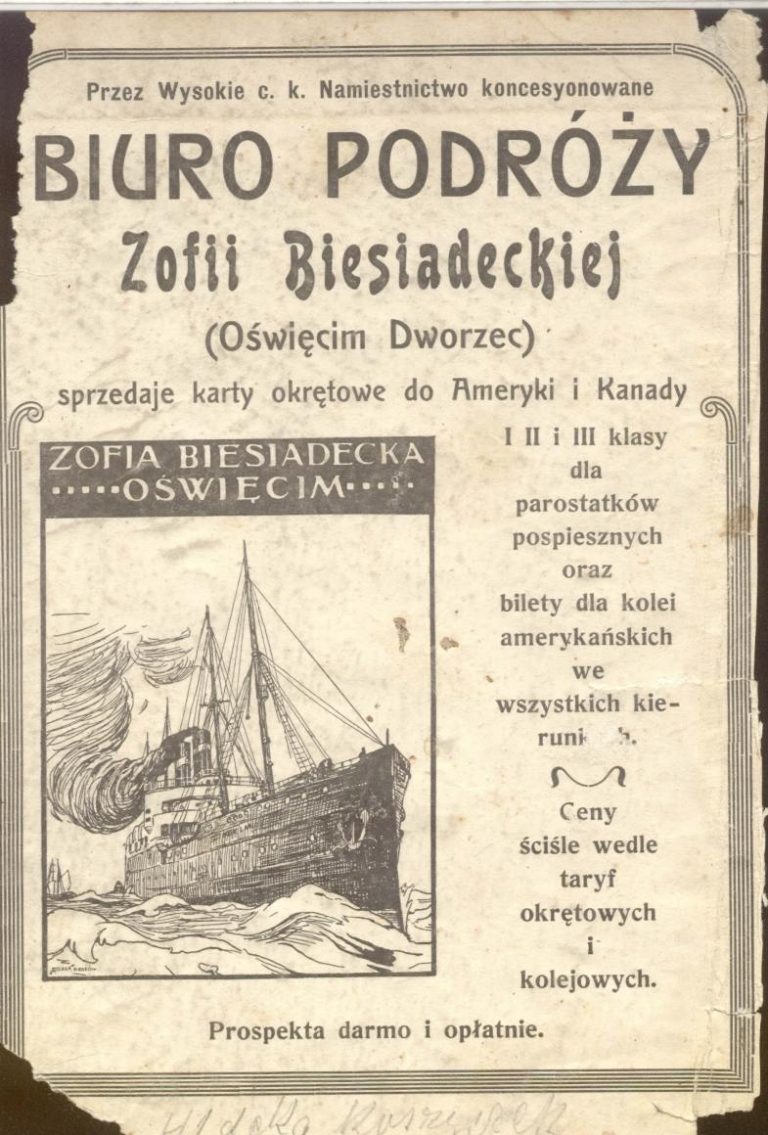
Advertising leaflet of Zofia Biesiadetska’s bureau
Zofia Biesiadetska's office in Oswiecim in Western Galicia was organizing transportation to America. The promotional leaflet offers tickets for steamboats to America and Canada. The transport revolution in the 19th century proved to be one of the most important factors that enabled mass intercontinental migration. Transport was relatively convenient and fast, as well as relatively inexpensive. With the beginning of mass migration, networks of agents developed, like Zofia Biesiedetska's bureau, who helped with the organization of the trip. This facilitated the migration of people from villages or small towns. At the same time, agents were often accused of lack of integrity and profiteering on migrants. Biesiadetska Bureau was one of the most respectable...

Grine kuzine (Green Cousin), song about emigration, 1921
The song, with a debatable authorship, was written for a Jewish theater. It was performed both in Europe and in the United States, and it became one of the most popular migrant works. The word “green” was an ironic definition of new immigrants who did not navigate well in American reality. The song “Green Cousin” raises the issue of disappointment of migrants in America, where hard work exhausts new-comers and does not bring the expected profit. The “Columbian state” appears not as a dream country where dreams come true, but a society of inequalities. Despite the hilarious music and satirical plot, the song shows the anxiety of emigrants due to the lack of...

A brivele der mamen (A Little Letter to Mama), song about emigration, 1907
The song was written by a Belarusian composer and singer, Solomon Smulewitz (1868-1943) in 1907. The author also had experience of migration to the United States. The song became very popular. In particular, it was used as a basis for a theatrical production and a film in Yiddish. The work raises the issue of migration caused separation of families. While the son who went to America has a successful life and a new family, his mother feels abandoned. Before her death, she asks her son not to forget to read Kaddish, a memorial prayer for her. The problem of separated families remained common to all migrants, but in this text the Jewish prayer...

“Goldene land” (Golden land), song about emigration, 1889
The song was written by a Lithuanian Jewish poet, Eliakum Zunser (1840-1913) based on his own experience of emigrating to the United States. The song "Golden Land" touches on the issue of new migrants, whose high expectations fail. The American city turns out to be a space full of dirt, noise, and poverty. Although jobs are available, they are poorly paid and dangerous to health. America is also not a place of social equality, because like in Europe, there is a disproportion in the distribution of wealth. This is an urban experience that was shared by many Jewish migrants who found work in the textile industry, or like Zunser himself, in the printing...
The end of the 19th century through the beginning of the 20th century is known as the period of mass migration from Europe to other continents, when more than 55 million people changed their place of residence. In particular, this process captured the Russian and Austro-Hungarian empires, where a difficult economic situation, job shortages, and persecutions stirred various groups of the population to leave. Such groups included both Ukrainian and Polish peasants, and Jews from urban centers who were small-scale craftsmen or workers. Most often, they moved to the United States, Canada, Argentina, and Brazil, where labor was needed at factories or farms.
The late nineteenth and twentieth centuries entered history with rapid changes, such as political, economic, demographic, social, ideological, and cultural. The course makes an attempt to look at how modernization has changed men and women and their gender roles and responsibilities, and what new meanings it gave to the once-established norms. It also tackles the question of how the modernity enshrined approaches affect our present. The topics presented in this course refer to different humanitarian disciplines (women's history, cultural studies, sociology, literary studies, art studies) and to different historical contexts. They rely on a variety of sources and methods focusing on a person in their gender-based roles and interdependencies. The course will present...
East-Central Europe played a vital role in the global history of mass migration and experienced an enormous variety of mobility processes in the long 19th and short 20th centuries. For instance, mass emigration from the Russian and Austro-Hungarian Empires and the Soviet Union, human trafficking, labor migration, forced migration during WWI and WWII, refugee crises and asylum, travel, and professional mobility. The voluminous scholarship on this chapter of migration history has lots of gaps and, notably, is almost absent from history curricula. This introductory course broadens our lens to examine the role of migration and mobility for the places where it occurred as well as the experiences of migrants, displaced persons, refugees, and...
The field of social history has achieved the edge of its popularity in 1950-1980s. It was strongly connected with other disciplines, such as economics, demography, sociology, and allowed historians to reach a much wider range of research themes. Since the 1960s, the social history of the Jewish people became important and influential part of the studies. Historians were exploring the possibilities to study Jewish community with new tools and integrating different representatives of Jewish community – workers, women, immigrants, criminals - in a research. Since 1990s historians of Jewish past shifted their interest to cultural studies. However, in the last years, we can see an economic turn, which signifies the search for a...
The field of social history has achieved the edge of its popularity in 1950-1980s. It was strongly connected with other disciplines, such as economics, demography, sociology, and allowed historians to reach a much wider range of research themes. Since the 1960s, the social history of the Jewish people became important and influential part of the studies. Historians were exploring the possibilities to study Jewish community with new tools and integrating different representatives of Jewish community – workers, women, immigrants, criminals - in a research. Since 1990s historians of Jewish past shifted their interest to cultural studies. However, in the last years, we can see an economic turn, which signifies the search for a...

